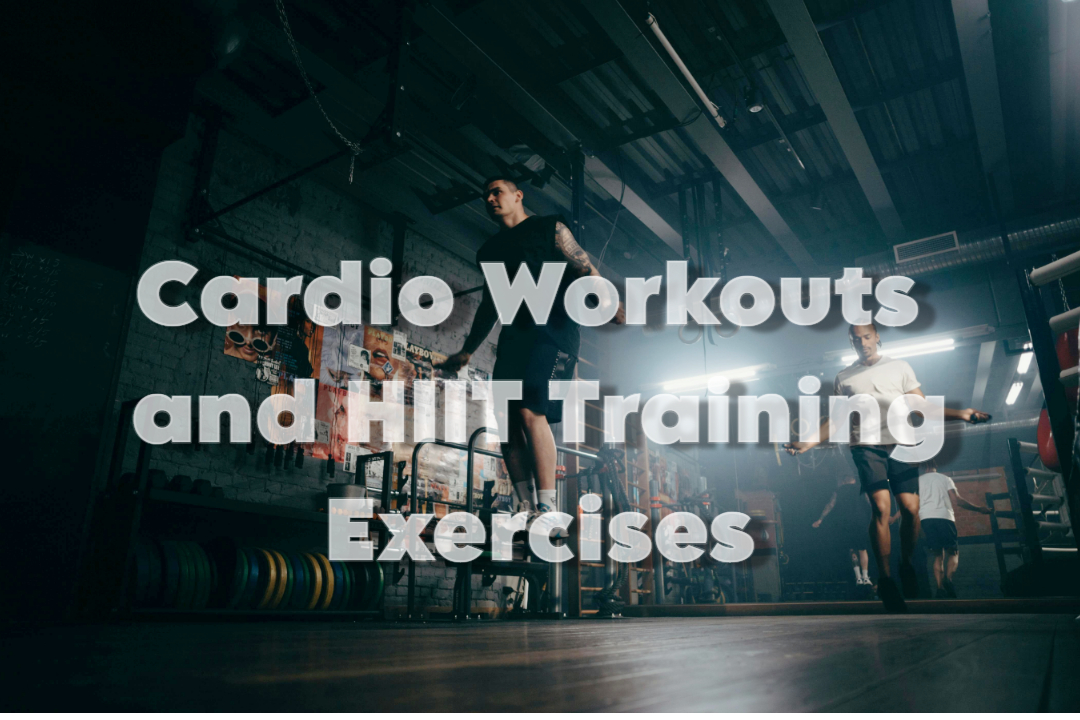Cardio workouts and HIIT training exercises are some of the most effective ways to burn fat, improve heart health, and boost your overall fitness. Whether you’re a beginner or an experienced athlete, incorporating cardio into your routine can yield significant benefits. Let’s dive into what cardio workouts and HIIT (High-Intensity Interval Training) exercises are and how they can transform your fitness.
What Are Cardio Workouts?
Cardio, short for cardiovascular exercise, refers to any workout that raises your heart rate and keeps it elevated for a period. These workouts enhance your heart’s ability to pump blood more efficiently, improving cardiovascular health.
Some popular cardio workouts include:
- Running
- Cycling
- Swimming
- Rowing
- Jump rope
Key Benefits of Cardio Workouts
- Improved Heart Health: Regular cardio workouts strengthen your heart and help prevent cardiovascular diseases.
- Weight Loss: Cardio burns calories and accelerates fat loss.
- Enhanced Stamina: With consistent cardio, you’ll increase endurance, allowing you to perform longer and more intense workouts.
- Mental Health Boost: Cardio helps in reducing stress and anxiety levels by releasing endorphins.
HIIT Training Exercises: The Power of Intensity
HIIT, or High-Intensity Interval Training, is a form of cardio workout that alternates between short, intense bursts of activity and low-intensity recovery periods. These workouts are typically much shorter than traditional cardio sessions but offer the same, if not greater, benefits.
What Makes HIIT Training Exercises Unique?

- Time Efficient: HIIT workouts can last between 15-30 minutes, making them ideal for those with busy schedules.
- Fat Burning: HIIT is known for its ability to boost metabolism and keep the body in fat-burning mode even after the workout is over.
- Versatility: You can perform HIIT with almost any cardio activity, such as sprinting, cycling, or bodyweight exercises like burpees and jumping jacks.
Cardio Workouts vs. HIIT Training Exercises: Which One Is Better?
Both cardio and HIIT have their place in a fitness routine. It depends on your goals, time, and fitness level. Here’s a comparison:
| Factors | Cardio Workouts | HIIT Training Exercises |
|---|---|---|
| Duration | 30-60 minutes | 15-30 minutes |
| Intensity | Moderate | High |
| Calorie Burn | Moderate | High |
| Post-workout Burn | Minimal | Significant |
| Suitable for Beginners | Yes | Yes, with modifications |
How to Incorporate Cardio Workouts and HIIT Training Exercises into Your Routine
Beginner’s Cardio Plan
If you’re just starting out, aim for 20-30 minutes of moderate cardio workouts like brisk walking or cycling, three to five times a week. Gradually increase the intensity as your fitness improves.
HIIT for Advanced Fitness Levels
For those with a solid fitness foundation, incorporate HIIT training exercises 2-3 times a week. Start with a 30-second sprint followed by 1 minute of slow walking or resting, and repeat for 15-20 minutes.
Cardio and HIIT: A Winning Combination
By combining both traditional cardio workouts and HIIT training exercises, you can achieve a balanced fitness routine that maximizes fat loss, improves endurance, and boosts heart health.
Sample Weekly Routine:
| Day | Workout Type |
|---|---|
| Monday | 30-minute steady-state run (Cardio) |
| Tuesday | 20-minute HIIT (cycling or sprints) |
| Wednesday | Rest or light walking |
| Thursday | 30-minute swimming or rowing (Cardio) |
| Friday | 20-minute HIIT (jump rope or bodyweight exercises) |
| Saturday | Hiking or recreational sports (Cardio) |
| Sunday | Rest |
Common FAQs About Cardio Workouts and HIIT Training Exercises
1. How many times a week should I do cardio workouts?
For beginners, start with 3-4 cardio sessions per week. As you build endurance, you can increase to 5-6 days.
2. Can I do cardio and HIIT training exercises on the same day?
Yes, you can combine both. However, avoid overtraining by ensuring adequate recovery time between intense sessions.
3. Is HIIT better than traditional cardio for fat loss?
HIIT burns more calories in less time and continues to burn calories after the workout due to the afterburn effect (EPOC). It’s highly effective for fat loss but should be paired with a balanced diet.
4. Can I do HIIT every day?
It’s best to limit HIIT workouts to 2-3 times a week to avoid burnout and injury. Rest days are crucial for recovery.
5. What’s the best cardio workout for beginners?
Walking, cycling, and swimming are great starting points for beginners. Gradually increase intensity as your fitness improves.
6. Do I need equipment for HIIT training exercises?
Not necessarily! You can do bodyweight HIIT exercises such as burpees, jump squats, and mountain climbers.
7. How long should a HIIT session last?
A typical HIIT session lasts between 15-30 minutes. You can start with shorter sessions and gradually increase time as you get fitter.
8. Can cardio workouts help with muscle building?
Cardio primarily burns fat, but it can help build lean muscle when combined with strength training exercises.
Incorporating cardio workouts and HIIT training exercises into your weekly routine can take your fitness to new heights. Whether you prefer the steady pace of traditional cardio or the intensity of HIIT, both offer incredible benefits for heart health, fat loss, and overall fitness.
